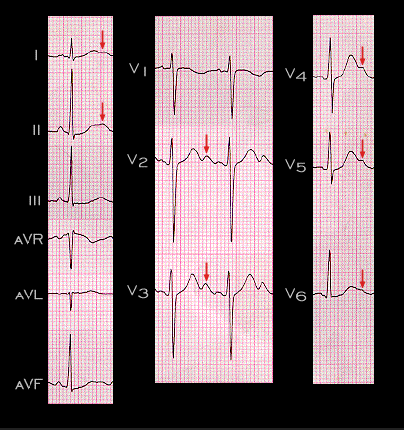
This ECG is from a 16 year old girl who was taken to the emergency department following an unexplained episode of syncope. The notching of the T wave (arrow) is easily confused with a U wave. It is the characteristic ECG of a mutation in one of the K channel genes and is an example of type 2 long QT syndrome. It identifies a patient who is at high risk for sudden cardiac death.
